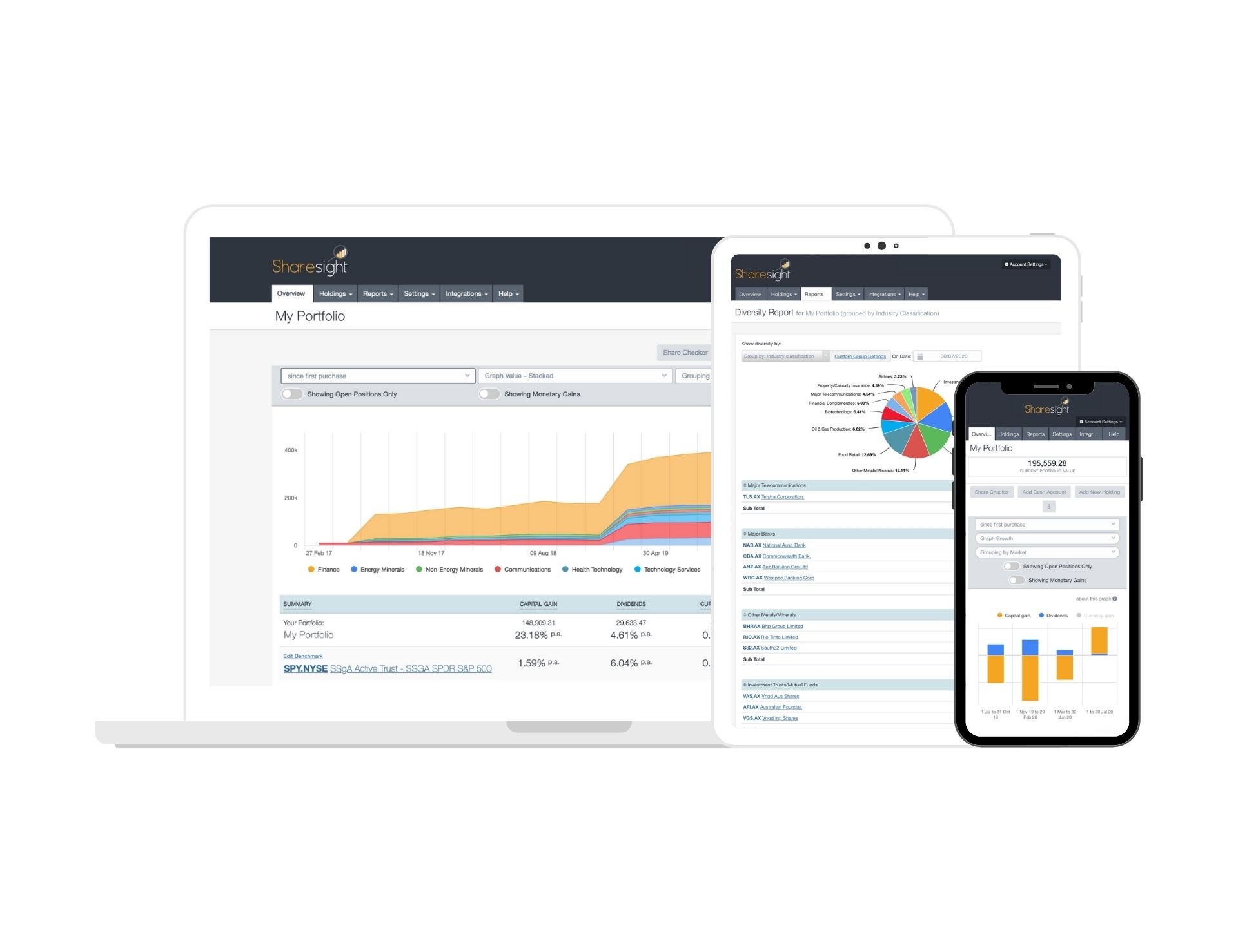Track stocks on the KOSDAQ exchange with Sharesight
With Sharesight, investors can easily track more than 1,400 stocks and ETFs on the KOSDAQ exchange, with daily price and performance updates. This is in addition to Sharesight’s support for key Asian markets such as the Korea Exchange (KRX), Shanghai Stock Exchange (SHG) and Tokyo Stock Exchange (TYO), plus over 40 other global markets including leading US exchanges. Sharesight’s extensive market support allows investors from around the world to track all their investments in one place, while providing them with powerful performance reports, dividend tracking and tax reporting features.

What is the KOSDAQ exchange?
Established in 1996, the KOSDAQ (Korean Securities Dealers Automated Quotations) is a South Korean electronic stock market that operates as the SME Market Division of the KRX. The stock exchange lists over 1,000 stocks, ETFs, bonds and REITs, including several large-cap companies. It is sometimes referred to as the "Korean Nasdaq", as it was originally benchmarked from the Nasdaq, and has a similar focus on innovative tech-driven companies.
Why investors should track their investments on the KOSDAQ exchange with Sharesight
With Sharesight, investors can easily track the price and performance of stocks listed on the KOSDAQ exchange alongside investments across multiple global markets, brokers and asset classes. By consolidating all of their investments in Sharesight, investors gain a portfolio-wide view of their investment performance, benefitting from daily price updates for the KOSDAQ, plus advanced reporting designed for the needs of self-directed investors. In addition, Sharesight’s annualised performance calculation methodology gives investors the complete picture of their portfolio returns by calculating the impact of capital gains, brokerage fees, dividends and foreign exchange rates on performance.
Track dividend income from KOSDAQ stocks
Unlike other portfolio trackers, Sharesight automatically tracks dividend and distribution income and includes this information when calculating your investment return. In the screenshot below for example, dividends make an important contribution to this stock’s returns, highlighting the value of a portfolio tracking solution that includes more than just capital gains in its performance calculations.

An example of a KOSDAQ stock holding with dividends contributing 6.17% to the total return.
Run powerful performance reports built for investors
For investors who want a more detailed breakdown of their portfolio’s performance, Sharesight offers a range of powerful reports including:
-
Performance: Calculate your total portfolio returns over any selected period.
-
Diversity: Discover how the assets in your portfolio are diversified across different investment sectors, investment types, countries and markets.
-
Contribution Analysis: Measure the impact of your holdings and asset allocations on your overall portfolio performance.
-
Future Income: View announced dividends and interest payments expected for investments in your portfolio.
-
Multi-Currency Valuation: See the value of your holdings denominated in the currency of your choice.
-
Multi-Period Report: Compare your portfolio returns over different time frames to see the impact of time on your performance.
Calculate the impact of KOSDAQ investments on your portfolio’s returns
In the screenshot below, you can see the Contribution Analysis Report (sorted by market) being used to assess the ‘weight’ of various markets in a US investor’s portfolio. This would be particularly useful for an investor looking to compare the relative contribution of their KOSDAQ investments to the total return on their portfolio, for instance.
In this example, the KOSDAQ is the most significant contributor to the portfolio’s value, constituting 47.42% and $71,494,24, followed by the NYSE at 21.85% and $32,940.33. The report also includes a detailed breakdown of each individual holding’s returns, classified by market.

The Contribution Analysis Report being used on a US portfolio with US and Asian stocks.
How to track stocks on the KOSDAQ with Sharesight
-
If you’re not using Sharesight yet, sign up for a FREE account to get started.
-
Add your holdings to your portfolio by searching for the relevant stock code under the market code KOSDAQ. Alternatively, you can add holdings through Sharesight’s File Importer feature.
-
Sharesight will automatically fill in the price history and performance valuation for your holdings by end-of-day on a daily basis. It will also backfill past dividends (and continue to add new ones as they are announced) – plus factor in the impact of any currency fluctuations on your performance for international investors.

Track your investment portfolio with Sharesight
Investing in stocks on the KOSDAQ and other global markets? You need to track your investment portfolio with Sharesight so you can:
-
Track all your investments in one place, including stocks in over 40 major global markets, mutual/managed funds, property, and even cryptocurrency
-
Automatically track your dividend and distribution income from stocks, ETFs and mutual/managed funds
-
Run powerful reports built for investors, including Performance, Portfolio Diversity, Contribution Analysis and Future Income (upcoming dividends)
-
Get the true picture of your investment performance, including the impact of brokerage fees, dividends, and capital gains with Sharesight’s annualised performance calculation methodology
Sign up for a FREE Sharesight account and get started tracking your investment performance (and tax) today.

FURTHER READING

8 ways to use Sharesight's custom groups feature
This blog explains our custom groups feature, including strategies that can help you gain deeper portfolio insights and make more informed investing decisions.

You can time the market – and ETFs are the way to do it
Marcus Today founder and director Marcus Padley discusses timing the market, and how investors can do this using exchange-traded funds (ETFs).

Morningstar analyses Australian investors’ top trades: Q1 2025
Morningstar reviews the top 20 trades by Australian Sharesight users in Q1 2025, and reveals where their analysts see potential opportunities.